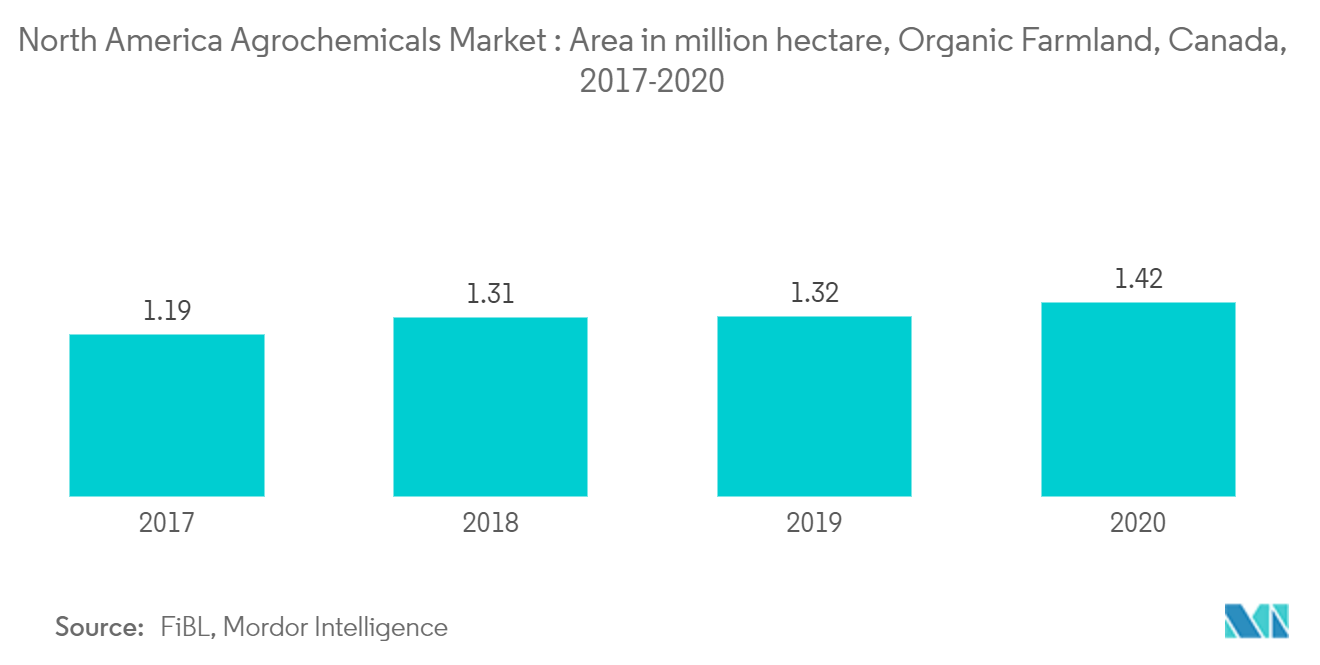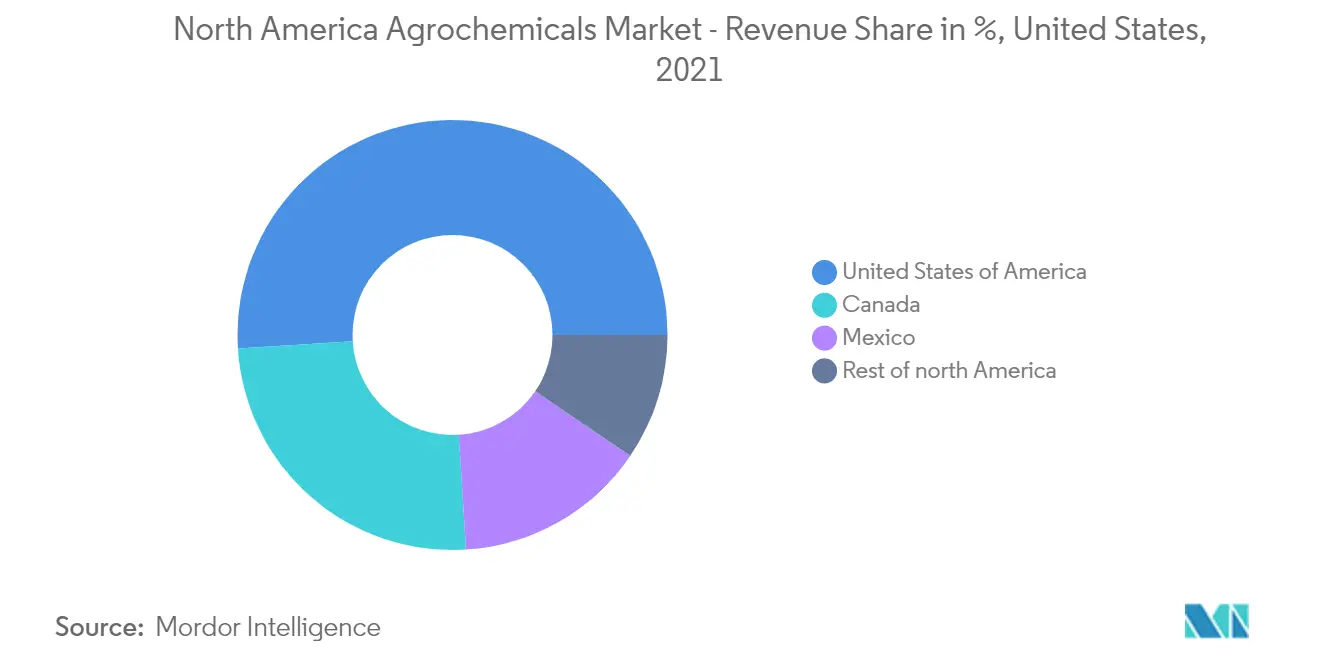Market Trends of North America Agrochemicals Industry
This section covers the major market trends shaping the North America Agrochemicals Market according to our research experts:
Rapid Adoption of Bio-based Agrochemicals
Although the prevalence of synthetic or chemical pesticides continues in the region, an emerging preference for biological pesticides has been observed in recent years, primarily due to the rapid adoption of sustainable agricultural practices, such as integrated pest management (IPM) techniques and organic farming. Bio-based agrochemical products that can improve yield and positively affect harvest grade and sizing in specialty crops, along with shelf life and nutritional quality, are gaining interest.
According to the USDA, in the 2019 Organic survey, there were 16,585 certified organic farms, a 17% increase from 2016, which accounted for 5.5 million certified acres, an increase of 9% over 2016. The organic farmland increased from 3.13 hectares to 3.65 hectares. As the farmland increased, the sales of certified organic products increased. US farms and ranches sold nearly USD 7.60 billion in certified organic goods in 2019. Further, Canada's area under organic farmland increased from 1.19 million hectares in 2017 to 1.42 million hectares by 2020, according to the Research Institute of Organica Agriculture(FiBL).
One of the key factors driving the biopesticides market is greater investment in R&D since the major agrochemical companies are increasing their investments in the research and development of new and improved biological solutions. For instance, Seipasa, a Spanish company specializing in developing and manufacturing biopesticides, biostimulants, and fertilizers for agriculture, received approval to register three new phytosanitary products in Mexico in 2020. The products registered include Pirecris (bioinsecticide), Seipa System (biofungicide), and Seican (triple mode action product).
Therefore, a rapid rate of adoption of organic farming, along with the active participation of the players in introducing new products, is expected to drive the overall agrochemicals market during the forecast period.

The United States Dominates the Market
According to a study conducted by the United States Department of Agriculture, in accordance with Environmental Protection Agency(EPA), chlorpyrifos and acephate are the most commonly used pesticide active ingredients in the country's agricultural sector.
Currently, corn, soybeans, wheat, and cotton account for the largest use of agrochemicals in the US market. As reported by FAO, soybean yield increased from 31,875 kg/ha in 2019 to 33,785 kg/ha in 2020. According to National Agricultural Statistics Service (NASS), about 96% of the soybean crop is grown in the mid-west states of the country.
Montana is one major crop growing area in the western region of the country, with maximum land contributed to wheat cultivation. As per NASS, the use of potash in wheat cultivation increased from 40lbs/acre in 2017 to 46lbs/acre in 2019. This indicates the extensive use of agrochemicals, proposing a lucrative in the concerned region.
Thus, as a leading producer of corn, soybeans, and wheat, the country is also a large consumer of fertilizer. However, with increased technology and innovation for on-farm products, the use of fertilizer in the United States is anticipated to be optimized over the coming years.


